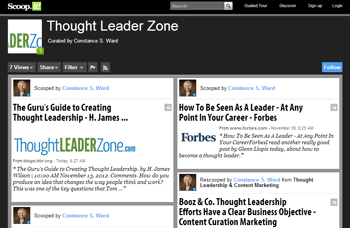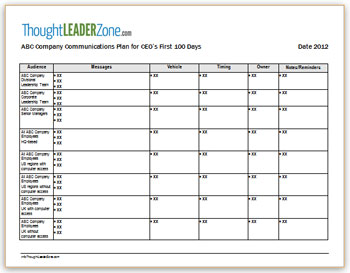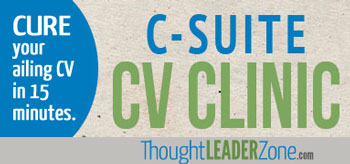 Are you a thought leader with an ailing CV? Take steps to create a healthy CV by contacting Thought Leader Zone for a resume rehab during the free “C-Suite CV Clinic” on Skype or Google Hangouts during the week of 25 February. Continue Reading…
Are you a thought leader with an ailing CV? Take steps to create a healthy CV by contacting Thought Leader Zone for a resume rehab during the free “C-Suite CV Clinic” on Skype or Google Hangouts during the week of 25 February. Continue Reading…
Slots Still Available for the C-Suite CV Clinic
You’re Cordially Invited to a C-Suite CV Clinic
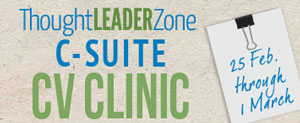 Are you a thought leader with an ailing CV? Does your resume need a dose of dazzle and a shot of wow to make it stand out? Here’s your chance to get an accurate diagnosis. Thought Leader Zone is offering a free “C-Suite CV Clinic” on Skype during the week of 25 February.
Are you a thought leader with an ailing CV? Does your resume need a dose of dazzle and a shot of wow to make it stand out? Here’s your chance to get an accurate diagnosis. Thought Leader Zone is offering a free “C-Suite CV Clinic” on Skype during the week of 25 February.
The inspiration for this clinic comes from some client work I’ve tackled recently. Last week I finished reviewing an executive’s CV – a seven-page resume that demonstrated an ability to accept increasingly challenging responsibilities. Continue Reading…
Three Actionable Steps to Make Your AGM a Thought-Leadership Showcase (Part 1)
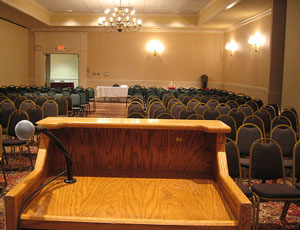 Ahhhh, the Annual General Meeting (AGM). The Chairman’s Office owns it. Legal runs it. Investor Relations designs it. Finance provides the figures. Communications and Marketing create the messages. What could possibly go wrong!
Ahhhh, the Annual General Meeting (AGM). The Chairman’s Office owns it. Legal runs it. Investor Relations designs it. Finance provides the figures. Communications and Marketing create the messages. What could possibly go wrong!
AGMs offer a once-a-year opportunity to display the best thinking your company has to offer investors and other attendees. They’re also the ideal brand showcase for you as a thought leader. Don’t waste this magic moment.
It’s soon reporting season so now is the time to take a close look at what your AGM says about your company and about you. Are you focusing only on past results or are you also presenting at least a snapshot of the present and a glimpse into the future? Continue Reading…
Do You Have a Handle on It?
 ”It” is your social media reputation and ”it” deserves a few minutes of discussion about how to handle ”it” particularly during times of crisis.
”It” is your social media reputation and ”it” deserves a few minutes of discussion about how to handle ”it” particularly during times of crisis.
Obviously the best metaphorical medicine for managing reputational risks is a healthy dose of preventative medication. But sometimes a crisis flares up and you need to do triage and respond as quickly as possible. A team that is constantly monitoring your online reputation can take swift measures if a crisis develops. Continue Reading…
Extolling the Virtues of Action-Oriented Email Subject Lines
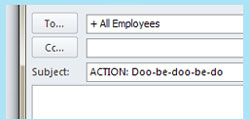 Efficiency and productivity are two watchwords for the busy thought leader. Here is a quick tip for making your emails have more impact and helping you get the results you want from them.
Efficiency and productivity are two watchwords for the busy thought leader. Here is a quick tip for making your emails have more impact and helping you get the results you want from them.
Every word should count when you write an email, and that includes the words in the subject line.
The chorus of the Frank Sinatra song ”Strangers in the Night” goes like this: ”Do, be, do, be, do…” That’s an important phrase to keep in mind when you write your next email. Tell your reader in the subject line what you want them to ”do” or ”be” after reading the email. Continue Reading…
12 Tips for Effectively Managing Remote Employees and Teams
 In a galaxy far, far away…as a global thought leader, you may often need to ”manage by mobile” and lead from a distance. Instead of ”eyeball management,” you need to be able to focus on ”results management” and trust that your employees are capable of achieving the goals you set for them even when you’re not physically present.
In a galaxy far, far away…as a global thought leader, you may often need to ”manage by mobile” and lead from a distance. Instead of ”eyeball management,” you need to be able to focus on ”results management” and trust that your employees are capable of achieving the goals you set for them even when you’re not physically present.
Some of the leadership skills remote managers display are similar to those of on-site managers. But multi-site, dispersed, virtual teams can present particular challenges for even the most experienced managers.
What challenges have you faced? How have you handled them? Take a few minutes and click here or comment below to share some of your experiences and tips with other thought leaders.
To kick start the conversation, here are 12 general observations and tips:
- Make your expectations concrete and measurable – for example, add structure by clarifying in writing short-term priorities and long-term goals.
- Check in regularly and spontaneously, formally and informally — for example, ”planned spontaneous interactions” might include virtual coffee chats and lunches or frequent check-ins with instant messaging.
- Keep it personal – for example, nothing will replace water cooler talks and coffee breaks, but take time to drop a personal note about something happening to the virtual employee – like a house move or a child graduating. Encourage a brief “sharing” time for all team members in regular meetings to help build team spirit.
- Be aware of the process the team is using and help them break it into manageable pieces with measurable results at key milestones.
- Don’t judge the process but judge the results.
- Set rules of engagement based on a consistent mission, purpose and values system.
- Agree on time boundaries — for example, what are the manager’s and the team’s expectations for sending or returning emails on the weekend, late at night or during the dinner hour.
- Set and model good communications practices — for example, what are the team’s rules on whom to cc: and what types of subject lines to include on emails.
- Listen better – for example, it’s much easier to miss subtle verbal clues when corresponding with telecommuters or distributed team members by telephone, video, Skype, etc.
- Remind on-site employees to listen to others on conference calls – for example, print out a photo of the remote employees and put them on the table or a chair during important meetings.
- Avoid engendering an ”us and them” mentality – for example, when virtual team members are mixed with co-located teams in headquarters, try overemphasizing the inclusion of voices outside the nucleus so that a “home-based” bias isn’t created inadvertently.
- Meet whenever possible in person, but particularly at the beginning of the distance employment relationship to minimize the virtual team member’s sense of isolation. Nothing replaces “face time”…nothing.
Do you need help improving communication as you manage remote employees from a galaxy far, far away from them? Ask, assess, then act. We’re here to help!
Here’s the Scoop on the Sacred Cows of Thought Leadership
Have you ever used Scoop.it? It’s a “curation platform e-zine,” which in plainer English is a site where individuals can curate or edit their own content and put it into an online magazine. The new Scoop.it site for Thought Leader Zone is http://www.scoop.it/t/thought-leader-zone and will be regularly updated.
One of the featured stories there now is about the “sacred cows” of thought leadership, which links back to the article at the site www.sourceforconsulting.com. Fiona Czerniawska, co-Founder of Source for Consulting, says that clients think thought leadership is one of the most effective ways in which a consulting firm can market itself. Continue Reading…
Pompeii and Circumstance – Planning for Crisis in Today’s Organization

Vesuvius (seen at left in the background) has erupted around 30 times since it caught the people of Pompeii totally unprepared in 79 A.D.
A friend of mine was taking a tour of Pompeii when her husband asked the tour guide, ”What would happen to Naples if Mount Vesuvius erupted again?”
The tour guide replied, ”We are certainly concerned about that! In fact, a few years ago we practiced all emergency procedures in case that would ever happen.”
”How did that practice go?” he asked.
”Oh, it was chaos! It all fell apart, and nobody did what they’d been instructed to do,” the tour guide replied.
”So what did you do to solve that problem?”
”We stopped practicing,” she said with a wink.
Your company may not be facing a Pompeii-type disaster at this time, but are you prepared for the time when circumstances become ripe for a ”volcano” erupting inside your organization because of an unfortunate event or a bad decision or a rapidly worsening business environment?
Do you have plans in place for such crises? Do you practice them on a regular basis to make sure they work? Ask, assess, then act. We’re here to help!
Related post:
10 Questions to Answer Before a Communications Crisis Hits your Organization
Writing – but not Rewriting – Your Professional History
 ”History will be kind to me because I wrote it,” Winston Churchill once said. If you are a thought leader in your industry, then you are writing your own history every day. But are you fully documenting that career path as you take the journey?
”History will be kind to me because I wrote it,” Winston Churchill once said. If you are a thought leader in your industry, then you are writing your own history every day. But are you fully documenting that career path as you take the journey?
Each company or position is another chapter in your history book. Take time soon, if you haven’t already, to capture sample pieces of documentation or videos or articles about you that belong to each chapter of your work life.
Beyond the CV: Items that help fully document your career and professional history
- Articles or papers or presentations you have published
- Articles written about you
- Resumes, CVs or short biographies while you were in each role
- Reference letters
- Photos of you and your team in action
- Videos of interviews
- Short descriptions of each company and position
- List of trade or industry associations you belonged to in each role
Sounds a bit like a comprehensive personnel file, doesn’t it?
Be a tough editor of your professional history book. Edit out any unnecessary pieces; but resist the temptation to rewrite history by only including complimentary articles or video clips, for example.
One last tip: keep these items in a safe, dry, accessible place.
Are you the historian of your own career? Are you keeping copies of clippings and videos and presentations that document your full career path and demonstrate your thought-leadership journey? Ask, assess, then act. We’re here to help!
Communications planning for the CEO’s First 100 Days – Part 2
In my last blog, you learned about the importance of choosing the right keywords to help potential client and customers find you online. As an example to illustrate that point, I used the term ”CEO first 100 days” as the blog title because those keywords have a low competition score: 0.09 out of 1.00.
But the topic of CEO transition planning is an important one for any company. Most corporate communications teams have a general plan in place that can be tailored and then implemented when the need arises. That helps them be better prepared for the ”expected” and the ”unexpected” when the company’s leader changes.
Click here or on the page above for a generic transition communications plan for a CEO’s first 100 days in office. Do you need help designing or implementing it? Ask, assess, then act. We’re here to help!
See related post:
Part 1: Key actions for the CEO’s First 100 Days (Part 1)

